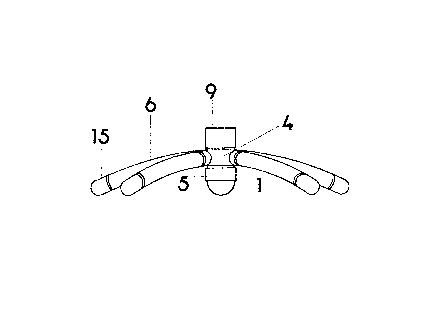Some of the information on this Web page has been provided by external sources. The Government of Canada is not responsible for the accuracy, reliability or currency of the information supplied by external sources. Users wishing to rely upon this information should consult directly with the source of the information. Content provided by external sources is not subject to official languages, privacy and accessibility requirements.
Any discrepancies in the text and image of the Claims and Abstract are due to differing posting times. Text of the Claims and Abstract are posted:
| (12) Patent Application: | (11) CA 2186291 |
|---|---|
| (54) English Title: | OFFICE CHAIR BASE WITHOUT CASTORS |
| (54) French Title: | BATI DE FAUTEUIL DE BUREAU SANS ROULETTES |
| Status: | Deemed Abandoned and Beyond the Period of Reinstatement - Pending Response to Notice of Disregarded Communication |
| (51) International Patent Classification (IPC): |
|
|---|---|
| (72) Inventors : |
|
| (73) Owners : |
|
| (71) Applicants : |
|
| (74) Agent: | |
| (74) Associate agent: | |
| (45) Issued: | |
| (22) Filed Date: | 1996-10-07 |
| (41) Open to Public Inspection: | 1998-04-07 |
| Examination requested: | 1996-10-07 |
| Availability of licence: | N/A |
| Dedicated to the Public: | N/A |
| (25) Language of filing: | English |
| Patent Cooperation Treaty (PCT): | No |
|---|
| (30) Application Priority Data: | None |
|---|
All office chairs have to ensure fast and smooth horizontal movement in all
directions. This problem has so far been resolved with the use of castors as part of
the architecture of the chair base. In this invention the castors are eliminated and
replaced by a freely rotating, centrally located ball and supporting legs with
rotating tips. This is an entirely new approach to resolving the problem and a new
aesthetic concept. This invention also secures independent rotation of the top and
bottom parts of the chair base.
Toutes les chaises de bureaux doivent assurer un mouvement horizontal rapide, en douceur, dans toutes les directions. Ce problème a jusqu'à maintenant été résolu par l'utilisation de roulettes intégrées à la base de la chaise. Dans la présente invention, les roulettes ont été éliminées et remplacées par une bille centrale à roulement libre et des pattes de support avec bouts roulants. Il s'agit d'une approche entièrement nouvelle à ce problème et d'un nouveau concept d'esthétique. Cette invention permet également la rotation indépendante des parties inférieure et supérieure de la base de la chaise.
Note: Claims are shown in the official language in which they were submitted.
Note: Descriptions are shown in the official language in which they were submitted.

2024-08-01:As part of the Next Generation Patents (NGP) transition, the Canadian Patents Database (CPD) now contains a more detailed Event History, which replicates the Event Log of our new back-office solution.
Please note that "Inactive:" events refers to events no longer in use in our new back-office solution.
For a clearer understanding of the status of the application/patent presented on this page, the site Disclaimer , as well as the definitions for Patent , Event History , Maintenance Fee and Payment History should be consulted.
| Description | Date |
|---|---|
| Inactive: Cover page published | 1999-09-30 |
| Application Not Reinstated by Deadline | 1998-12-03 |
| Inactive: Dead - No reply to s.30(2) Rules requisition | 1998-12-03 |
| Deemed Abandoned - Failure to Respond to Maintenance Fee Notice | 1998-10-07 |
| Inactive: Status info is complete as of Log entry date | 1998-06-09 |
| Application Published (Open to Public Inspection) | 1998-04-07 |
| Inactive: Abandoned - No reply to s.30(2) Rules requisition | 1997-12-03 |
| Inactive: S.30(2) Rules - Examiner requisition | 1997-06-03 |
| All Requirements for Examination Determined Compliant | 1996-10-07 |
| Request for Examination Requirements Determined Compliant | 1996-10-07 |
| Abandonment Date | Reason | Reinstatement Date |
|---|---|---|
| 1998-10-07 |
Note: Records showing the ownership history in alphabetical order.
| Current Owners on Record |
|---|
| PENKA DIMITROVA DEMERDJIEV |
| PETER GUEORGIEV DEMERDJIEV |
| Past Owners on Record |
|---|
| None |